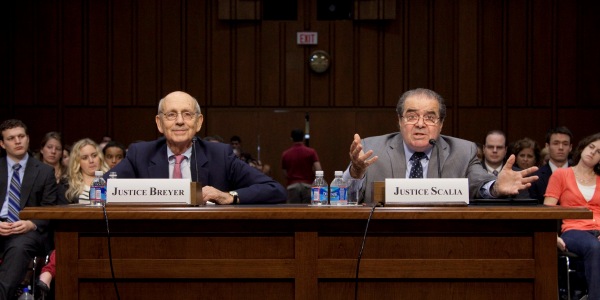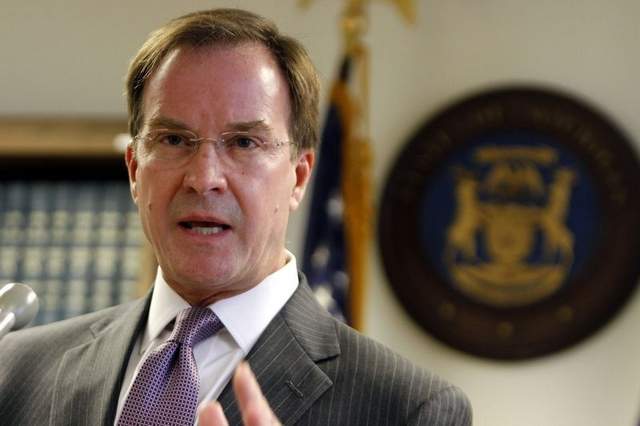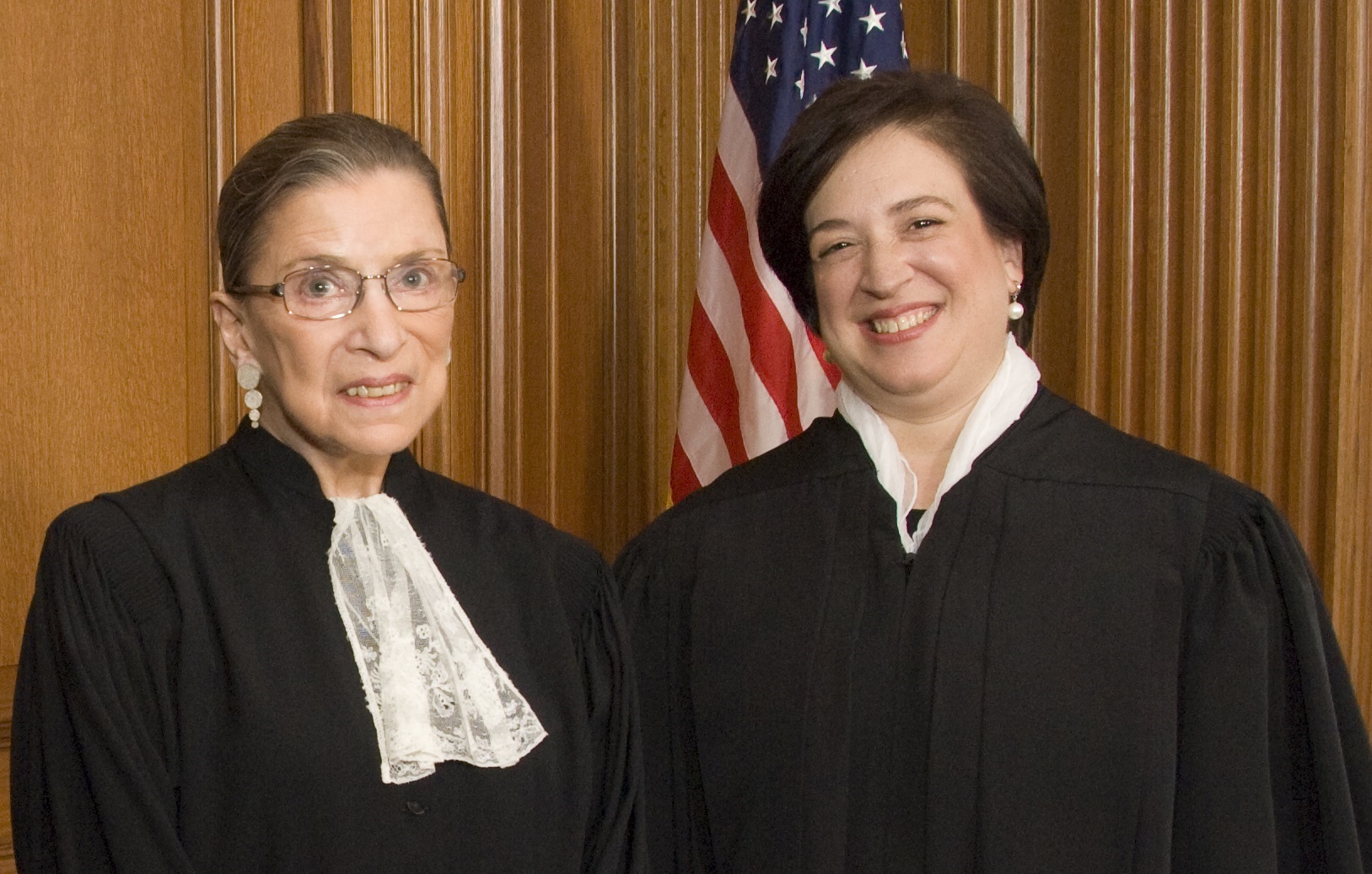Jeffrey Toobin’s latest piece for The New Yorker, “Our Broken Constitution” (paywalled), is an illuminating stroll through a myriad of justifiable complaints about the American founding document. But I couldn’t help but notice several questionable (and, in some cases, completely inaccurate) statements.
The essay opens thusly: “If there is a single point of consensus in this heated political moment, it’s that everyone loves the Constitution.” In the next paragraph, Toobin continues: “The Constitution, and the structure of government that it established, provides the backdrop, but never the subject, for every controversy.”
Skip ahead two paragraphs, however, and you’ll find the exact opposite: “Outside Washington,” Toobin explains, “discontent with the founding document is bipartisan and widespread…On the left and the right, [critics] are asking whether the pervasive dysfunction in Washington is in spite of the Constitution or because of it.” How can both be true simultaneously?
That’s not the only problem. Toobin’s opening statement, even if evaluated in the absence of his self-rebuttal a few lines down, is demonstrably inaccurate. Of course, there’s a certain futility to disproving any theory that includes the phrase “everyone loves” — which, to his credit, Toobin couldn’t possibly have meant literally. Nevertheless, even if afforded an ostensibly looser interpretation of “everyone,” his argument simply doesn’t work.
In fact, Toobin’s essay is itself just the latest in a series, all of which harp on the same general theme (a mostly justified one, to my eyes) that the Constitution is — to put it simply — overrated. A July 2012 Slate piece titled “Fixing the U.S. Constitution” invited readers and experts to amend the venerable document, introducing the effort thusly: “Politicians talk about the Constitution as if it were as sacrosanct as the Ten Commandments. But the document itself invites change and revision.”
In December of that same year, The New York Times ran an op-ed piece by Louis Michael Seidman, a constitutional law professor at Georgetown, headlined “Let’s Give Up on the Constitution.” In it, Seidman laments “our insistence on obedience to the Constitution, with all its archaic, idiosyncratic and downright evil provisions.” He also points out the long history of constitutional dissent: “Constitutional disobedience may seem radical, but it is as old as the Republic. In fact, the Constitution itself was born of constitutional disobedience…No sooner was the Constitution in place than our leaders began ignoring it.”
Less than three months ago, in September, Kevin R.C. Gutzman asked in The American Conservative: “Do We Need a New Constitutional Convention?” Perhaps more to the point, a National Journal article the following month by Alex Seitz-Wald was self-explanatorily titled, “A How-To Guide to Blowing Up the Constitution.” And these are just a few representative samples in a long canon of disenchantment with the output of “We the People” (or, rather, of their aristocratic appointees to the constitutional convention).
A second problem crops up soon enough. A little further along, but still on the article’s first page (p. 64 in the print edition), Toobin writes: “Implicitly but unmistakably, the 1787 Constitution allowed for the continuation of slavery.”
There is nothing implicit about the Constitution’s allowance for slavery. In the very first Article, Section 2, Clause 3 states, in part:
Representatives and direct Taxes shall be apportioned among the several States which may be included within this Union, according to their respective Numbers, which shall be determined by adding to the whole Number of free Persons, including those bound to Service for a Term of Years, and excluding Indians not taxed, three fifths of all other Persons.
Later on, in Article I, Section 9, Clause 1, the Constitution explicitly allows for the slave trade’s continuation until at least 1808:
The Migration or Importation of such Persons as any of the States now existing shall think proper to admit, shall not be prohibited by the Congress prior to the Year one thousand eight hundred and eight, but a Tax or duty may be imposed on such Importation, not exceeding ten dollars for each Person.
Article IV, Section 2, Clause 3 states:
No Person held to Service or Labour in one State, under the Laws thereof, escaping into another, shall, in Consequence of any Law or Regulation therein, be discharged from such Service or Labour, but shall be delivered up on Claim of the Party to whom such Service or Labour may be due.
And finally, Article V reaffirms the impossibility of eliminating the slave trade until at least 1808:
The Congress, whenever two thirds of both Houses shall deem it necessary, shall propose Amendments to this Constitution, or, on the Application of the Legislatures of two thirds of the several States, shall call a Convention for proposing Amendments, which, in either Case, shall be valid to all Intents and Purposes, as Part of this Constitution, when ratified by the Legislatures of three fourths of the several States, or by Conventions in three fourths thereof, as the one or the other Mode of Ratification may be proposed by the Congress; Provided that no Amendment which may be made prior to the Year One thousand eight hundred and eight shall in any Manner affect the first and fourth Clauses in the Ninth Section of the first Article; and that no State, without its Consent, shall be deprived of its equal Suffrage in the Senate.
Midway through Toobin’s piece, a third flaw emerges. Speaking of President Obama, Toobin writes:
Though he will spend eight years in office, his tenure as the actual leader of the national government lasted about a year and a half. On July 7, 2009, Al Franken was seated, after a recount, as the sixtieth Democratic senator. (Sixty votes are needed to overcome a filibuster.)…In the midterm elections of 2010, Obama’s party lost control of the House and fell below the filibuster threshold in the Senate.
But as has been well-documented (here, and here, and here, to name a few places) — and especially visible, one would imagine, to a political junkie such as Toobin — Obama’s actual filibuster-proof Senate majority lasted only four months in reality. Rachel Maddow’s blog explains:
In January 2009, there were 56 Senate Democrats and two independents who caucused with Democrats. This combined total of 58 included Sen. Ted Kennedy (D-Mass.), whose health was failing and was unable to serve. As a practical matter, in the early months of Obama’s presidency, the Senate Democratic caucus had 57 members on the floor for day-to-day legislating.
In April 2009, Pennsylvania’s Arlen Specter switched parties. This meant there were 57 Democrats, and two independents who caucused with Democrats, for a caucus of 59. But with Kennedy ailing, there were still “only” 58 Democratic caucus members in the chamber.
In May 2009, Sen. Robert Byrd (D-W.Va.) was hospitalized, bringing the number of Senate Dems in the chamber down to 57.
In July 2009, Sen. Al Franken (D-Minn.) was finally seated after a lengthy recount/legal fight. At that point, the Democratic caucus reached 60, but two of its members, Kennedy and Byrd, were unavailable for votes.
In August 2009, Kennedy died, and Democratic caucus again stood at 59.
In September 2009, Sen. Paul Kirk (D-Mass.) filled Kennedy’s vacancy, bringing the caucus back to 60, though Byrd’s health continued to deteriorate.
In January 2010, Sen. Scott Brown (R-Mass.) replaced Kirk, bringing the Democratic caucus back to 59 again.
Thus Obama’s supermajority, for all practical purposes, lasted only from September 24, 2009 until February 4, 2010, when Scott Brown took Kennedy’s old seat in the Senate.
Finally, towards the end of his article Toobin notes the undemocratic nature of the House of Representatives: “In 2012, House Democratic candidates across the country won about half a million more votes than their Republican opponents, but the G.O.P. emerged with thirty-three more seats than the Democrats.”
Toobin is correct on the seat differential, but significantly off on the vote gap. According to analysis performed by the Cook Political Report’s U.S. House editor, Dave Wasserman (and briefly explained by Talking Points Memo editor Josh Marshall), House Democrats actually won 1,365,157 more votes than Republicans in 2012 — a differential nearly three times that cited by Toobin.
Out of an abundance of caution — since Toobin had specifically compared the Democrats’ vote totals to those of their Republican opponents (emphasis mine) — I copied Wasserman’s Google spreadsheet and eliminated all House races in which either the Democrat or Republican candidate received 0 votes. This, I believe, should serve as a reasonably good proxy for uncontested races — in other words, those with no opponents. When only contested races are counted, the Democrats’ vote advantage over the GOP extends to 2,444,369. This is nearly five times as high as Toobin’s count.
I bring all this up not to rag on Toobin, who is obviously an astute legal mind. I enjoyed his article and am generally sympathetic to the complaints registered by the progressive movement regarding the Constitution’s many inadequacies. But several passages somehow slipped past The New Yorker‘s legendary fact-checking desk.














